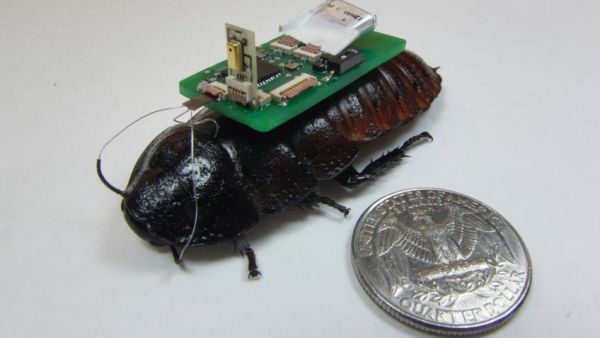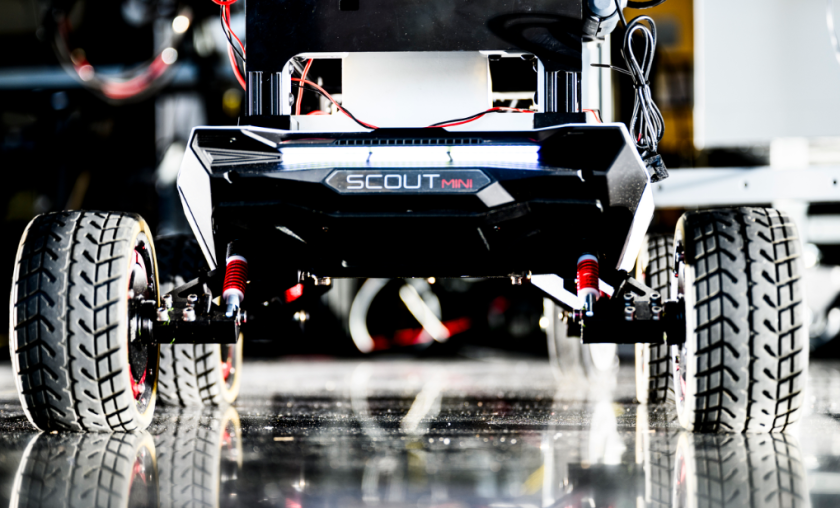Cockroaches are one organism that is disliked by a majority of people but these creepy looking creatures is soon going to help in tracing humans trapped in disaster sites. Similar to penny sized micro robots, these tiny roaches can make its way through the extremely small spaces where others like dogs, camera or robots might not reach thus making rescue operation slow and risking lives of people.
Wondering how cockroaches can do this job? Well, researchers from North Carolina State University have fitted the regular cockroaches with a backpack that contains certain electronics to detect sounds, turning them into so called cockroach cyborgs or bio-bots.
Electronic backpack
There are two varieties of electronic backpack designed by the team, informs Dr. Alper Bozkurt, senior author on the research and assistant professor of electrical and computer engineering. These backpacks connected to the cockroach antennae helps in controlling the movements of roaches. The first variety of backpack for the bio-bots is equipped with a single microphone to capture high-resolution sounds coming from any direction and transmitting to a transponder, wirelessly; while the second one has an arrangement of three directional microphones to identify the sound direction.
The high-resolution microphone mounted on the bio-bots will help in identifying relevant sounds like trapped people calling for help, while ignoring irrelevant sounds like a leaking pipe. After detecting any relevant calling sounds, the bio-bots can be instructed to find the location of those sounds, adds Bozkurt. Here is a lab video of the microphone array system.
Previous research, conducted by Dr. Edgar Lobaton has demonstrated that bio-bots can be employed to map an accident area. Now National Science Foundation is funding the research being led by Bozlurt and Lobaton who aims to make bio-bots capable enough to map disaster location as well as locate survivors. In any disaster location, following sounds can help in locating survivors stuck inside the rubble.
Invisible Boundary
Moreover to keep the bio-bots from wandering off from the disaster area, the research team has developed an innovative technology to limit the bio-bots locomotion. The technology acts as an invisible boundary, which keeps the bots within the required area. This will also help in maintaining many bio-bots within accessible range of each other or a base station and thus can be used alternatively as a mobile wireless network. Moreover, it can also be used to direct bio-bots towards the source of lights to recharge miniature solar panels fitted on backpacks. Here is a video describing the for invisible boundary technology in practice.
The remote controlled bio-bots will prove helpful in rescue operations, even making the operation faster by detecting the exact location of trapped survivors and in examining environments that are difficult or dangerous for humans to reach. However, this technology is surely going to upset PETA people.
Source: NC State University





Well this is fantastic Neha. Using cockroach in a rescue ops will surely augment such processes. These insects can survive in low oxygen conditions and that is another reason for the test being conducted on them.
The idea sounds cool but I am in doubt about its implementation. What if cockroaches will not go to the site where people are buried after an earthquake?
Experts are working to control the cockroach mobility by electrically stimulating their antenna, thus keeping them within the required location. But the biobot can only trace people calling for help, may easily overlook unconscious people trapped nearby.
I have a better and least expensive idea, how about dumping a few insects into debris and people will scream and viola! the rescue ops can find the way 😀 Anyways, jokes apart, instead of building an expensive micro-machine, fitting electronic backpack on these bugs can indeed solve the problem. Is there any specific reason why these roaches won’t go to buried site, I mean, since their movements are controlled so I don’t think there’d be difficulty in hovering to the unknown places including rubble.